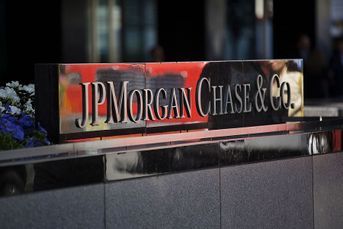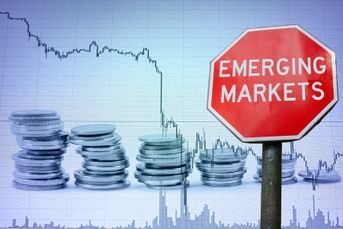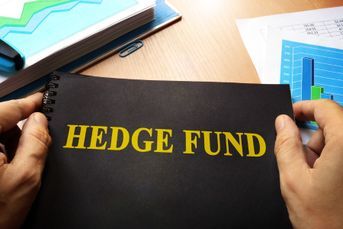Apple stock plunge sends shudder through rest of U.S. economy
 An employee, right, demonstrates the camera function on the Apple Inc. iPhone XS Max, right, and the iPhone XS at an Apple store during its launch in Hong Kong, China, on Friday, Sept. 21, 2018. The iPhone XS is up to $200 more expensive than last year's already pricey iPhone X and represents one of the smallest advances in the product line's history. But that means little to the Apple faithful or those seeking to upgrade their older iPhone. Photographer: Anthony Kwan/Bloomberg
An employee, right, demonstrates the camera function on the Apple Inc. iPhone XS Max, right, and the iPhone XS at an Apple store during its launch in Hong Kong, China, on Friday, Sept. 21, 2018. The iPhone XS is up to $200 more expensive than last year's already pricey iPhone X and represents one of the smallest advances in the product line's history. But that means little to the Apple faithful or those seeking to upgrade their older iPhone. Photographer: Anthony Kwan/Bloomberg
Abysmal seven-day stretch for iPhone-maker further dragged by earnings speculation analysts say is too optimistic
Even in the best of times, Apple Inc. is a formidable bellwether. So when its stock plunges on concerns that reach beyond tech and into every corner of the U.S. economy, investors everywhere gasp.
The iPhone maker just capped its worst seven-day stretch in two years and sent the Nasdaq 100 Index plummeting, dragged down by speculation analysts are too optimistic about next year’s sales. While Tuesday’s bounce steadied nerves, anxiety about the future shows little sign of dissipating as Wall Street frets the high point of the earnings cycle is past.
“I think we saw peak earnings and sales growth in 2018,” said James Ragan, director of wealth management research at D.A. Davidson. While still bullish on stocks, Ragan says that “volatility is back, and we are seeing fears going into October re-emerge.”
Everyone knows S&P 500 profits are gangbusters now. Third-quarter earnings rose 26% in the S&P 500 and the full year’s results will almost match that. But for all the cheer about the present, companies are notably dour on the future. Guidance is deteriorating.
(More: New iPhone can end the days of carrying around two phones)
Over the past three months, firms saying sales will miss analyst estimates outnumbered those saying they will exceed them by the most since 2009, data compiled by Evercore ISI showed. The trend also worsened for the bottom line.
When guidance weakens, it dims many of the cases for owning equities, particularly valuation, which bulls usually frame against next year’s estimates. While the S&P 500 looks cheap at 16 times forecast profits, it would prove less so should those forecasts turn out wrong.
From a strengthening dollar to rising costs of wages and raw materials, and higher interest rates to trade tensions, the list of headwinds is building for corporate America.
“As long as the dollar is headed higher and rest-of-world growth remains weak, the outlook for revenue and earnings growth is likely to remain under pressure,” Dennis Debusschere, head of portfolio strategy at Evercore, wrote in a note to clients. Last month, he lowered his 2019 estimate for S&P 500 earnings and said if historical valuations prevail, the S&P 500 may not bottom till 2,550.
The equity benchmark fell 2% to 2,726 on Monday for a third straight day of declines as Apple led the retreat in tech stocks. The drop came after Lumentum Holdings Inc. cut its second-quarter outlook after one of its largest customers asked to “meaningfully reduce shipments” for previous orders. Lumentum didn’t name the customer, but Apple is its biggest, according to Bloomberg supply-chain data.
Selling spread in Asia, with Japan’s Nikkei 225 losing more than 3% at one point and the MSCI Asia Pacific Index down more than 2%.
Concern over Apple’s sales comes after high-profile warnings from Alphabet and Amazon prompted investors to look past solid results from previous quarters. Goldman Sachs and Citigroup have warned about heightened market volatility as expectations came down.
October was the U.S. equity market’s worst month in seven years and coincided with a flurry of earnings downgrades. The expected rate of growth for S&P 500 income in the current quarter has fallen to 15% from 18% at the start of October, according to analyst estimates compiled by Bloomberg.
Expectations for next year are also weakening. For two weeks in a row, analysts trimmed their predictions. At $175.8 a share, the estimated profits have declined 0.7% from the peak in September, the biggest downward revision for the year.
https://www.investmentnews.com/wp-content/uploads/assets/graphics src=”/wp-content/uploads2018/11/CI1178591113.PNG”
Going by history, more downgrades may be on the way. Thanks to tax cuts, 2018 stands as an outlier, a year in which profits estimates have kept rising as it went on. That’s not what usually happens. Over the last 30 years, analysts have generally started way too optimistic and then cut annual forecasts as time went on — by an average of 8%, data compiled by Goldman showed. Should 2019 track that pattern, EPS would erode to $161.70 — not the $175.80 forecast now.
Goldman strategists led by David Kostin predicted $173 for next year. Tobias Levkovich at Citigroup called for $172.50, or 6% growth.
“The previously assumed growth of 12% next year was simply too high, and a reset was needed for companies to have a chance to meet or beat Street projections,” Levkovich wrote in a note. “A number of high-profile corporations trimmed their outlooks and the Street was forced to take notice.”
(More: Tech bloodletting approaches $300 billion)
Not everyone is worried about the risk of further downgrades, and indeed, bears incorrectly predicted throughout the early part of this year that profit growth had peaked. Diane Jaffee, senior portfolio manager and group managing director of relative value strategies at The TCW Group, attributes the lack of corporate optimism to the trade tensions between the U.S. and China and sees bargains emerging after the sell-off.
“We saw double-digit earnings growth in 2017 and 2018. We should continue to see that in 2019,” she said. “Confidence is now lacking by businesses saying we can’t predict demand that we have seen so far will continue” because of the uncertainty over import tariffs, she added. “Once we get any clarity on that, markets should stabilize.”
Learn more about reprints and licensing for this article.








